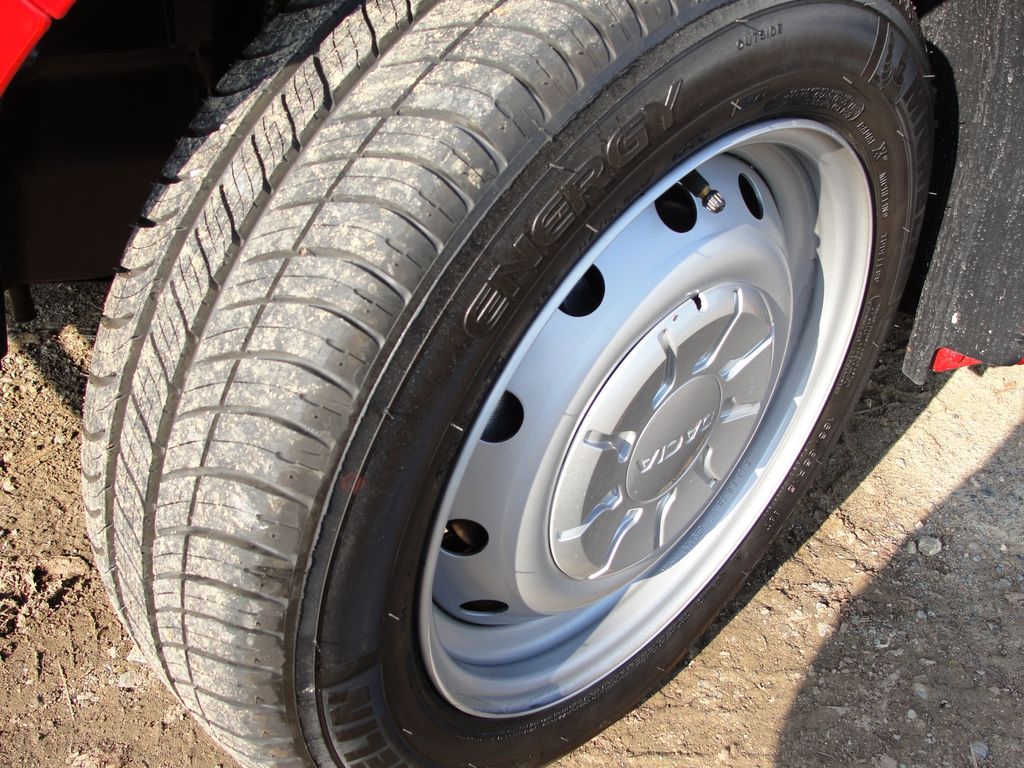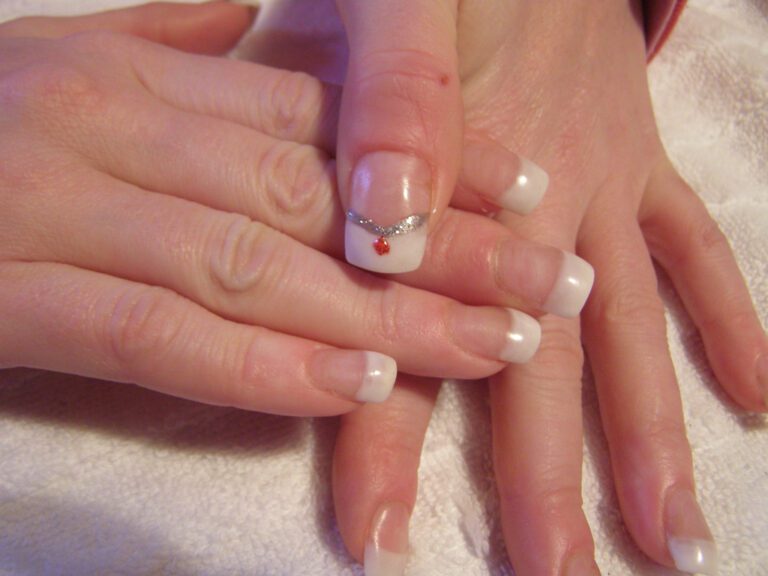“On the Road: How Nails Get into Tires”
Deprecated: mb_convert_encoding(): Handling HTML entities via mbstring is deprecated; use htmlspecialchars, htmlentities, or mb_encode_numericentity/mb_decode_numericentity instead in /home/u654140373/domains/nailinspire.com/public_html/wp-content/plugins/kadence-pro/dist/elements/elements-init.php on line 1267
Deprecated: Function utf8_decode() is deprecated in /home/u654140373/domains/nailinspire.com/public_html/wp-content/plugins/kadence-pro/dist/elements/elements-init.php on line 1275
Tire punctures caused by nails and other debris on the road can be a frustrating and potentially dangerous experience for drivers. Understanding the mechanics of how nails get into tires and the preventive measures to protect tires is essential for safe driving. This article explores the journey of a nail from construction sites to highways, the aftermath of a nail puncture, innovative tire technology, and statistical insights into tire punctures.
Key Takeaways
- Regular tire inspections and maintenance are crucial for preventing nail punctures.
- Self-sealing tires and run-flat tires are innovative solutions to minimize the impact of nail punctures.
- Navigating construction zones safely can reduce the risk of encountering nails and debris on the road.
- The economic impact of tire-related incidents highlights the importance of proactive tire care and maintenance.
- Understanding the frequency of tire punctures on urban versus rural roads can inform drivers about potential risks in different environments.
The Journey of a Nail: From Construction Sites to Highways

Common Sources of Roadway Debris
Roadway debris, a hazard for drivers worldwide, often originates from areas of heavy construction and poorly secured cargo. Construction sites, in particular, are prolific sources of nails and other sharp objects that can find their way onto roads and highways. These materials can be inadvertently kicked up by the tires of passing vehicles or scattered due to inadequate containment measures.
Improperly secured loads on vehicles contribute significantly to the debris problem. Items that are not tied down correctly can fall off during transit and become dangerous obstacles. The following list outlines common origins of such debris:
- Construction sites
- Overloaded dumpsters
- Unsecured cargo on trucks
- Demolition sites
- Residential and commercial trash bins on collection days
Tip: Regularly check your vehicle’s cargo to ensure everything is properly secured before hitting the road. This simple step can prevent the unintentional spread of hazardous materials.
The Lifecycle of a Nail on the Move
Once a nail leaves the confines of a construction site or a home improvement project, its journey is far from over. These small but sturdy objects often find their way onto roads and highways, becoming potential hazards for unsuspecting motorists. The lifecycle of a nail on the move can be broken down into several stages:
- Displacement: Initially, nails are often inadvertently kicked or scattered to nearby areas due to the hustle and bustle of construction activity.
- Transportation: Nails can then be transported further by vehicles, strong winds, or the soles of shoes, reaching public roadways.
- Settlement: Over time, nails settle into grooves and cracks on the road surface, waiting for the unfortunate encounter with a tire.
Tip: Always be vigilant of the road surface, especially in areas near construction sites, to avoid running over nails and other debris.
The final stage is the potential puncture of a tire, which can lead to a range of complications for the driver, from a simple tire repair to a dangerous blowout. Understanding the journey of a nail can help drivers anticipate and avoid these risks.
Understanding Tire Puncture Mechanics

How Nails Pierce Tires
When a nail finds its way to a tire, it’s not just a matter of chance; it’s a matter of physics. The puncture process begins when the sharp point of a nail comes into contact with the tire’s surface. As the tire rolls over the nail, the weight of the vehicle applies pressure, forcing the nail through the tire’s outer layer. The angle at which the nail enters the tire can significantly affect the outcome. A perpendicular entry is more likely to result in a clean puncture, while an oblique angle may cause the nail to tear the rubber, potentially leading to a more damaging and complex repair.
- Tire tread depth also plays a crucial role in puncture mechanics. Deeper treads can sometimes deflect nails, reducing the risk of puncture, but they can also trap nails that might otherwise be pushed aside by shallower treads. Here’s a quick overview of the factors influencing nail punctures:
- Tire Tread Depth: Deeper treads may deflect or trap nails.
- Angle of Entry: Perpendicular angles increase puncture chances; oblique angles may cause tearing.
- Vehicle Weight: Heavier vehicles exert more pressure, increasing puncture risk.
- Nail Size and Shape: Larger or irregularly shaped nails are more likely to cause damage.
Tip: Regularly checking your tire tread depth can help you understand your tires’ vulnerability to punctures and plan for preventive maintenance accordingly.
The Role of Tire Tread Depth and Angle of Entry
The integrity of a tire’s tread plays a pivotal role in preventing punctures. Tire tread depth is critical because deeper grooves can often deflect nails and other sharp objects away from the tire’s vulnerable inner layers. Conversely, worn treads offer less protection and are more susceptible to punctures.
The angle at which a nail enters the tire also significantly affects the likelihood of a puncture. A nail that approaches the tire at a perpendicular angle is more likely to penetrate the tire’s surface, while an oblique angle may result in the nail being deflected away. Here’s a simple breakdown of how angle affects puncture probability:
- Perpendicular entry: High puncture probability
- Oblique entry: Moderate to low puncture probability
Tip: Regularly check your tire tread depth and replace tires when necessary to reduce the risk of punctures. Maintaining proper tire inflation can also help maintain the shape of the tire, providing a better defense against nails and other debris.
Preventive Measures to Protect Your Tires

Regular Tire Inspections and Maintenance
The cornerstone of tire longevity and safety is rooted in regular inspections and maintenance. By conducting routine checks, drivers can identify early signs of wear, improper inflation, and potential punctures. Visual inspections should be part of every driver’s regular maintenance routine, ideally performed monthly or before long trips.
- Check tire pressure to ensure tires are inflated to the manufacturer’s recommended levels.
- Examine the tread depth to confirm it meets legal safety standards.
- Look for any signs of uneven wear, which could indicate alignment or suspension issues.
- Inspect the sidewalls for cuts, bulges, or other irregularities.
Tip: Always include the spare tire in your inspection routine. Although it’s often out of sight, it should not be out of mind.
These simple steps can significantly reduce the risk of tire failure and extend the lifespan of your tires. By being proactive, you can avoid the inconvenience and potential danger of a tire-related incident.
Navigating Construction Zones Safely
When navigating construction zones, it is crucial to research your route beforehand. This allows you to be aware of any ongoing construction and potential hazards. Additionally, paying attention to signage and speed limits is essential for safe navigation. Remember to slow down and maintain a safe distance from other vehicles. These simple measures can significantly reduce the risk of encountering debris and puncturing your tires. Stay safe on the road!
The Aftermath of a Nail Puncture

Immediate Steps to Take Post-Puncture
After experiencing a tire puncture, it is crucial to assess the severity of the damage. Begin by checking for any visible signs of the puncture, such as nails or screws embedded in the tire. Next, inspect the tire pressure to determine the extent of deflation. If the puncture is minor, consider using a tire repair kit to temporarily seal the hole. However, if the damage is substantial, it is advisable to replace the tire altogether.
In addition, it is important to monitor the tire for any signs of leakage in the days following the puncture. Even after a temporary repair, the tire may continue to lose air, indicating a persistent issue that requires professional attention.
Lastly, remember to drive cautiously and avoid sudden maneuvers after a puncture. This will help prevent further damage to the tire and ensure a safe journey to the nearest repair facility.
Long-Term Tire Damage Considerations
When considering the long-term effects of a nail puncture on a tire, it’s important to assess the potential for internal damage to the tire structure. This can lead to gradual loss of air pressure and compromise the overall integrity of the tire. Additionally, prolonged exposure to moisture and debris can exacerbate the damage, leading to corrosion and weakening of the tire material. It’s crucial to monitor the affected tire closely and consider the following factors:
Innovations in Tire Technology

Self-Sealing Tires and Their Effectiveness
Self-sealing tires represent a significant advancement in tire technology, aimed at addressing the inconvenience and safety concerns associated with tire punctures. These tires feature a layer of sealant within the tire that automatically fills in small punctures, typically up to 6mm in diameter, preventing air loss and allowing drivers to continue their journey without immediate repair.
The effectiveness of self-sealing tires is often measured by their ability to seal punctures caused by nails and other common road debris. While not a replacement for regular tire maintenance, they offer a layer of protection that can be especially valuable in areas prone to roadway debris. Bridgestone is among the industry leaders in this technology, with their Selfseal tires providing reliable puncture resistance.
Tip: While self-sealing tires can provide temporary relief from small punctures, they are not a substitute for proper tire care. Regular inspections are still necessary to ensure long-term tire health.
It’s important to note that self-sealing tires are distinct from run-flat tires, which are designed to operate even when completely deflated. The self-sealing feature is intended to manage minor punctures and is not equipped to handle larger breaches or sustained operation without air.
Run-Flat Tires: A Solution to Nail Punctures?
Run-flat tires represent a significant advancement in tire technology, offering a level of security and convenience that traditional tires cannot match. When punctured by a nail, run-flat tires are designed to maintain their shape and enable a vehicle to continue driving for a limited distance at a reduced speed, typically up to 50 miles at 50 mph. This feature allows drivers to reach a safe location or a repair shop without the immediate need for a roadside tire change.
The construction of run-flat tires includes reinforced sidewalls that support the vehicle’s weight even when the tire pressure drops. However, they are not impervious to all types of damage and may still require replacement after a puncture. It’s important to note that while run-flat tires can be a temporary solution to nail punctures, they are not a permanent fix and should be inspected by a professional as soon as possible.
Tip: Always check your vehicle’s manual to understand the specific limitations and recommendations for your run-flat tires. Not all vehicles are equipped with a tire pressure monitoring system (TPMS), which is essential for detecting loss of pressure in run-flat tires.
Despite their benefits, run-flat tires may come with trade-offs such as a firmer ride and potentially higher replacement costs compared to standard tires. Below is a comparison of key considerations:
- Durability: Run-flat tires are built to withstand a puncture and continue functioning, but they may wear out faster than regular tires under normal conditions.
- Cost: The initial investment in run-flat tires is higher, but they can save money on emergency roadside services.
- Ride Comfort: Some drivers report a stiffer ride due to the reinforced sidewalls.
- Availability: Not all tire models or sizes are available in run-flat versions, which can limit options.
Statistical Overview of Tire Punctures

Frequency of Tire Punctures on Urban vs. Rural Roads
The distinct physical characteristics and environmental conditions of roads in urban and rural areas significantly contribute to different riding behaviors. When it comes to tire punctures, the frequency varies between urban and rural roads. Here’s a brief statistical comparison:
| Road Type | Frequency of Punctures |
|---|---|
| Urban | Higher |
| Rural | Lower |
This data highlights the need for drivers to be aware of the increased risk of tire punctures in urban areas and take necessary precautions. Regular tire inspections and maintenance are especially crucial for urban driving. Navigating construction zones in urban areas also requires extra vigilance to avoid potential puncture hazards.
The Economic Impact of Tire-Related Incidents
The economic implications of tire-related incidents are far-reaching, affecting not only individual motorists but also the broader economy. Tire punctures can lead to direct costs such as repairs, replacements, and towing services. Indirect costs include lost time, decreased productivity, and even the impact on traffic flow due to incidents.
Tire maintenance and puncture repairs represent a significant market within the automotive service industry. The demand for tires and related services is closely tied to economic conditions. During periods of economic growth, there is typically an increase in vehicle sales, which in turn boosts the demand for tires and maintenance services.
Preventive measures and regular maintenance can mitigate some of these costs, but the economic impact remains substantial. Consider the following:
- Direct repair and replacement costs
- Indirect costs such as lost productivity
- Traffic congestion and delays
- Increased demand for services during economic upturns
Keeping tires in good condition and being vigilant about potential hazards can save motorists from the inconvenience and expense of tire-related incidents.
In this statistical overview of tire punctures, we delve into the frequency, causes, and impact of tire punctures on vehicle safety. From common causes such as nails and sharp objects to the economic and safety implications, this article provides a comprehensive analysis of tire punctures. If you’re looking for expert tips on preventing and dealing with tire punctures, visit NAILinspire.com – The Ultimate Online Nail Art Design Library for valuable insights and solutions.
Frequently Asked Questions
How do nails end up on the road?
Nails can end up on the road from construction sites, industrial areas, and other locations where construction or maintenance work is being performed. They are often dropped or lost during these activities, and can then be picked up by passing vehicles and eventually find their way onto the road.
Can nails puncture tires even at slow speeds?
Yes, nails can puncture tires even at slow speeds. The force and angle of entry of the nail, as well as the condition of the tire tread, can all contribute to a nail puncturing a tire, regardless of the vehicle’s speed.
What should I do immediately after a nail puncture?
Immediately after a nail puncture, it is important to pull over to a safe location and assess the damage. If the tire is losing air, it is advisable to change the tire or use a temporary repair kit if available. It is also important to inspect the tire for any signs of damage.
How can I prevent nail punctures in my tires?
Regular tire inspections and maintenance are key to preventing nail punctures. Additionally, being cautious when driving through construction zones and avoiding debris on the road can help reduce the risk of nail punctures.
Do self-sealing tires effectively prevent nail punctures?
Self-sealing tires are designed to seal punctures as they occur, which can effectively prevent air loss from nail punctures. However, the effectiveness of self-sealing tires may vary depending on the size and location of the puncture.
What is the economic impact of tire-related incidents?
Tire-related incidents, including nail punctures, can have a significant economic impact due to costs associated with tire repair or replacement, vehicle downtime, and potential safety hazards. Understanding the economic impact can highlight the importance of preventive measures and innovative tire technologies.







